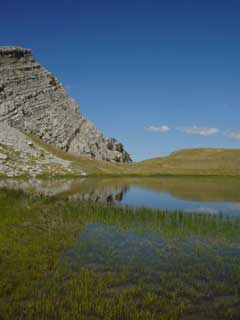 The True Cost of Water
The True Cost of Water
Hear about novel and effective water resource management strategies, much needed in light of skyrocketing demands for water for industry and agriculture, coupled with decreasing availability of freshwater resources.
The availability of water for sustainable human development and healthy functioning of Earth's ecosystem has never been more pressing an issue than it is today. Skyrocketing demands for water for industry and agriculture, coupled with decreasing availability of freshwater resources due to unsustainable usage, necessitate novel and effective water resource management strategies.
On May 6, 2010, the NYAS Green Science & Environmental Policy Discussion Group, in partnership with the Columbia University Water Center, hosted a discussion on "The True Cost of Water." The meeting focused on the importance of economic optimization of water usage to establish long-term sustainability of water resources. Among the needs for water resource management are the desirability of achieving equitable distribution of scarce water among communities and the allocation of water among different industries such as power generation and irrigation. Upmanu Lall, Director of the Columbia Water Center, moderated the evening, which featured presentations by Michael Hanemann, Chancellor's Professor in the Department of Agricultural & Resource Economics at the University of California, Berkeley, and Gregory Characklis, Professor of Environmental Sciences and Engineering at the University of North Carolina.
Water is a unique commodity, due to its cultural significance, its ecological role, and the economics of the supply, as Michael Hanemann explained. Water is freely available in the environment and all people have access to some form of water, but the infrastructure that treats the water and delivers it to the user requires large capital investments. Hanemann discussed the problematic cost structure of the water supply system and the difficulty of measuring the benefits provided by improved water supply and sanitation. These economic challenges are inherent in providing water, and are present in both developed and developing countries. Hanemann presented a case study of a dysfunctional system in Northern California to illustrate the complexities of sustainable water resource management.
Greg Characklis described how water resource planning can be improved with hydrologic and economic modeling in "Improving Water Management through Integration of Engineering and Economics." He first gave an overview of the current approaches to water supply management in the United States, contrasting the systems in the western states with those in the east. In order to meet the water demands of the growing population while maintaining viable ecosystems, these strategies need to undergo a transformation. Characklis gave several examples of innovative strategies developed for several water supply networks—including the Research Triangle and Central Coastal Plain areas of North Carolina and the Lower Rio Grande Valley in Texas. Each strategy is optimized to the lowest cost solution given the hydrology and water needs of the region.
| Contact information | n/a |
|---|---|
| News type | Inbrief |
| File link |
http://www.nyas.org/Publications/Ebriefings/Detail.aspx?cid=648ba9af-feed-4e79-9d62-69922477c4c0 |
| Source of information | Presented by the Green Science & Environmental Policy Discussion Group and the Columbia Water Center - NYAS |
| Subject(s) | AGRICULTURE , INDUSTRY , POLICY-WATER POLICY AND WATER MANAGEMENT , WATER DEMAND |
| Geographical coverage | n/a |
| News date | 12/08/2010 |
| Working language(s) | ENGLISH |
 you are not logged in
you are not logged in





